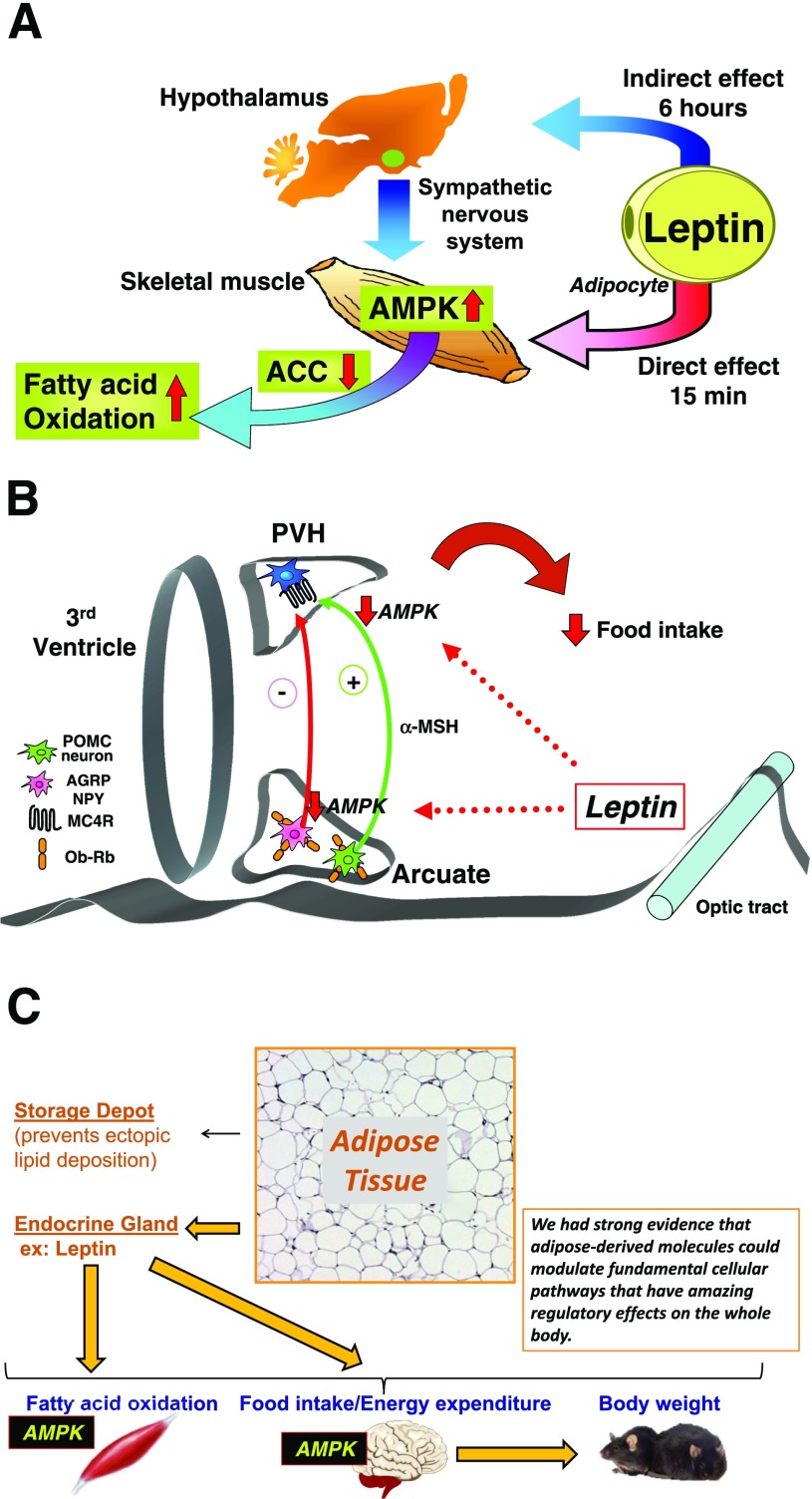Figure 3.
Leptin regulates fatty acid oxidation in muscle by activating AMPK. A: Leptin activates α2-AMPK in red skeletal muscle through two distinct mechanisms. Early activation of AMPK after intravenous leptin administration appears to be direct, whereas later activation depends on the hypothalamic–sympathetic nervous system axis. Leptin’s effect to activate AMPK is associated with suppression of acetyl-CoA carboxylase (ACC) activity and results in stimulation of fatty acid oxidation. Panel A reprinted from Minokoshi et al. (10). B: Leptin inhibits α2-AMPK activity in the arcuate and paraventricular hypothalamus (PVH), and this is necessary to decrease food intake in response to leptin. Panel B reprinted from Minokoshi et al. (11). C: Schematic of how white adipose tissue regulates whole-body metabolism. Through its endocrine actions—in this case, leptin—white adipose tissue can modulate AMPK signaling in other tissues. This is fundamental to maintaining energy supplies at the cellular level, and this pathway stimulates fatty acid oxidation in muscle. In addition, leptin secreted from white adipose tissue inhibits the AMPK pathway in the hypothalamus to regulate food intake and energy expenditure and ultimately body weight. Our early work with leptin and AMPK provided strong evidence that adipose-derived molecules could modulate fundamental cellular pathways that have regulatory effects on the whole body.

